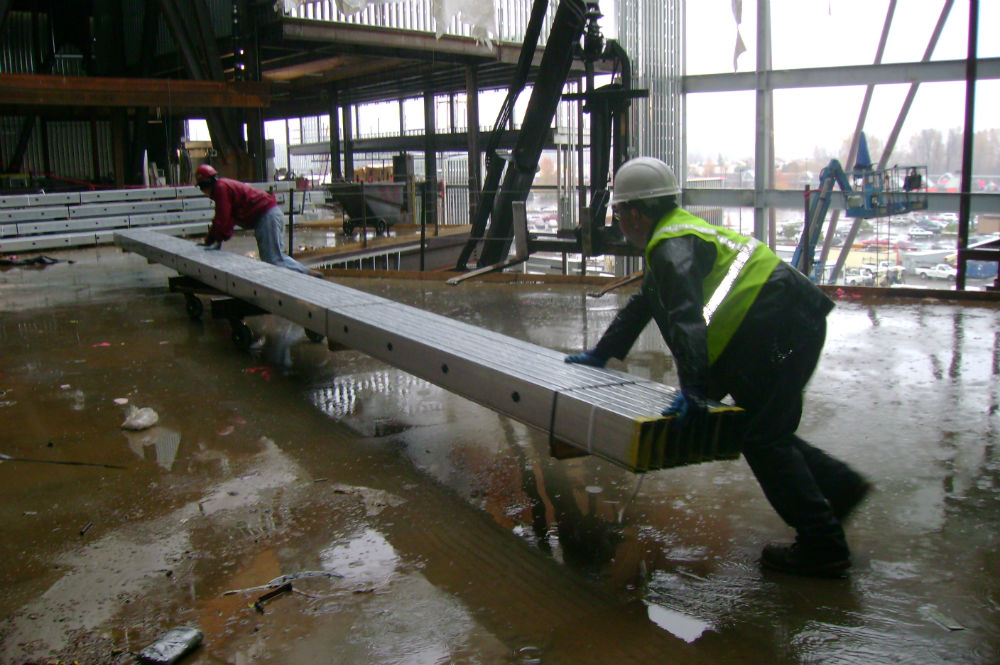Jan 12

What Makes a Stud "Structural"?
by Steeler Inc.
The Answer: It Depends on the Application
A Quick Guide to the ASTMs Which Distinguish Between Structural and Nonstructural
The technical difference between structural and nonstructural comes from ASTM C645 (nonstructural) and ASTM C955 (structural):
From ASTM C645 section 3.2.2 "nonstructural wall stud - a member in a steel framed wall system which is limited to a lateral (transverse) load of not more than 10 lb/sf, a superimposed vertical load, exclusive of sheathing materials, of not more than 100 lbf/ft, or a superimposed vertical load of not more than 200 lbs."
From ASTM C955 section 3.2.2 "structural member -a member in a steel framed system in which the loading exceeds any of the following conditions: a transverse load of 20 lbf/ft of member length, or an axial load, exclusive of sheathing, of 200 lbf per member."
C955 also sets minimum material thickness of 0.0329”.
Basically, structural vs non-structural refers to the application of a product, and not the dimensions of the product itself. That said, a structural stud is governed by a different ASTM standard than nonstructural studs, and the structural ASTM (C955) has a strict requirement for minimum thickness of 33mil, and minimum coating of G60.
Within the industry though, many people have come to think the structural/nonstructural issue has to do with the flange size. Technically this is not true. 1 ¼” is the minimum flange size for all steel studs, regardless of gage or application, but because the nonstructural/weaker application almost always uses that flange, while structural members are often designed with a wider than minimum flange to handle increased loads, many people say ‘nonstructural’ to mean 1 ¼” flange, and ‘structural’ to mean a 1 5/8” (or other) flange. Some industry resources exacerbate this by having a table for studs with 125 flanges labeled as non-structural, and all other studs in a separate table labeled as structural. But our ICC book does NOT make that distinction, and all the standards referenced by the code do not make that distinction. Still not clear what makes a stud structural?





